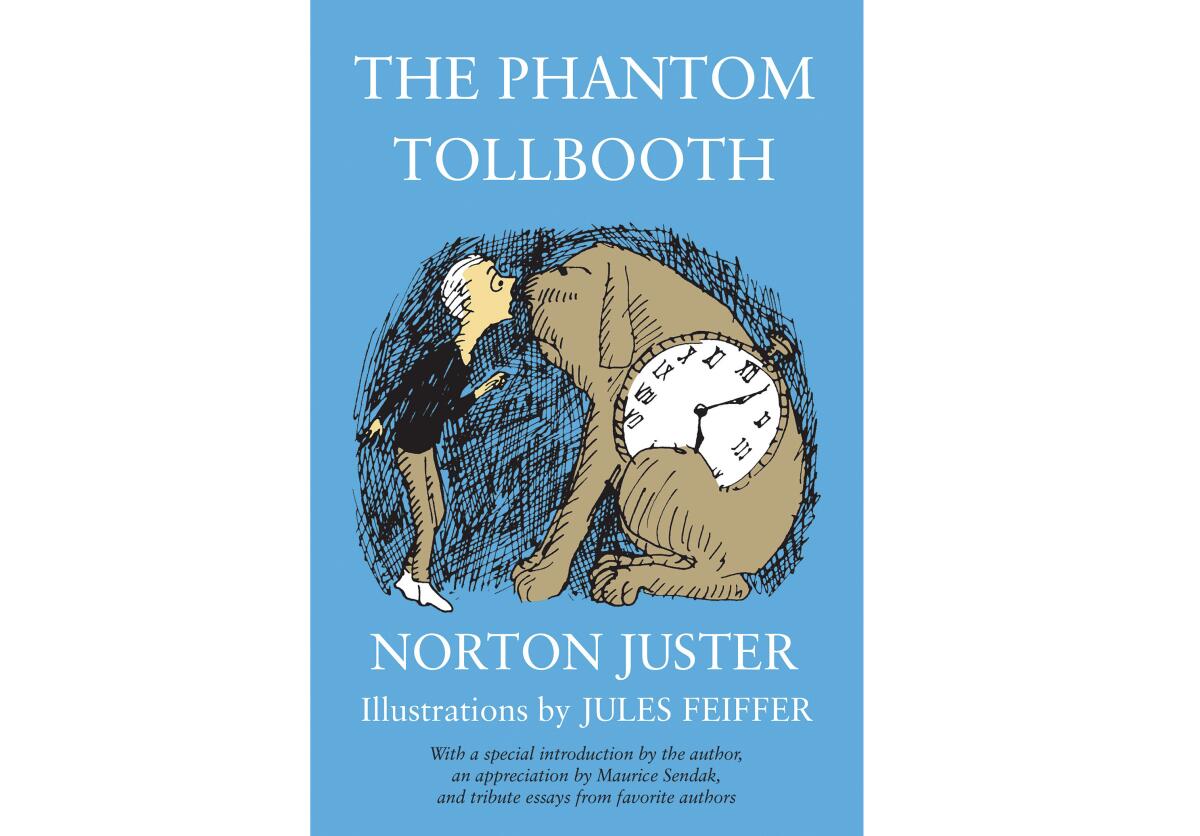Norton Juster, ‘The Phantom Tollbooth’ author, dead at 91

Norton Juster, the celebrated children’s author who fashioned a world of adventure and wordplay in the million-selling classic “The Phantom Tollbooth” and remained true to his wide-eyed self in such favorites as “The Dot and the Line” and “Stark Naked,” has died at 91.
Juster’s death was confirmed Tuesday by a spokesperson for Random House Children’s Books, who did not provide details. Juster’s friend and fellow author Mo Willems tweeted Tuesday that Juster “ran out of stories” and died “peacefully” the night before.
“Norton’s greatest work was himself: a tapestry of delightful tales,” Willems wrote.
“The Phantom Tollbooth,” published in 1961, followed the adventures of young Milo through the Kingdom of Wisdom, a land extending from The Foothills of Confusion to The Valley of Sound, populated by the imperiled princesses Rhyme and Reason and the fearsome Gorgons of Hate and Malice.
Drawings were provided by his roommate at the time, Jules Feiffer, who would later collaborate with Juster on “The Odious Ogre,” published in 2010. Eric Carle of “The Very Hungry Caterpillar” fame illustrated Juster’s “Otter Nonsense,” which came out in 1982.
As Juster wrote in the introduction to a 1999 reissue of “The Phantom Tollbooth,” he first thought of the book when he was in his late 20s and working at an architectural firm in New York City. He found himself wondering, the way a child might, about how people relate to the world around them.

He had received a grant for a book on urban planning and spent months researching it before a boy’s “startling” question — overheard by Juster in a restaurant — changed his narrative and changed his life: “What’s the biggest number there is?”
“I started to compose what I thought would be about a child’s confrontation with numbers and words and meanings and other strange concepts that are imposed on children,” he wrote. “I loved the opportunity to turn things upside down and inside out and indulge in all the bad jokes and puns and wordplay that my father had introduced me to when I was growing up.”
Another Juster admirer, Maurice Sendak, would praise the book’s “excitement and sheer delight in glorious lunatic linguistic acrobatics.” A 1970 film adaptation of “The Phantom Tollbooth” starred Butch Patrick of “The Munsters” fame, and the tale was later made into a musical, with a score by Arnold Black and lyrics by Sheldon Harnick.
Juster’s wife of 54 years, Jeanne, died in 2018. They had a daughter, Emily.
Juster, a native of New York City, was the son and brother of architects and he never turned entirely from his family craft. He continued to write books, while co-founding the architectural firm Juster Pope Associates, in Shelburne Falls, Mass., and his stories often combined his seemingly opposite gifts for structure and absurdity.
“The Dot and the Line: A Romance in Mathematics” is a love triangle as only Juster could have imagined — between a straight and strait-laced line, a dotty dot and a swinging squiggle. (Animator Chuck Jones adapted it into an Oscar-winning short film).
“Stark Naked” finds an undressed protagonist wandering in the town of Emotional Heights, encountering such characters as the intellectual Noel Lott and school principal Martin Nett.
Juster’s more recent stories included “The Hello, Goodbye Window,” for which illustrator Chris Raschka received a Caldecott Medal, and the sequel “Sourpuss and Sweetie Pie.” One project he never got around to: that book on urban planning.
“The funny thing is that many of the things I was thinking about for that book did find their way into ‘The Phantom Tollbooth,’” he wrote in 1999. “Maybe someday I’ll get back to it when I’m trying to avoid doing something else.”
More to Read
Start your day right
Sign up for Essential California for the L.A. Times biggest news, features and recommendations in your inbox six days a week.
You may occasionally receive promotional content from the Los Angeles Times.




